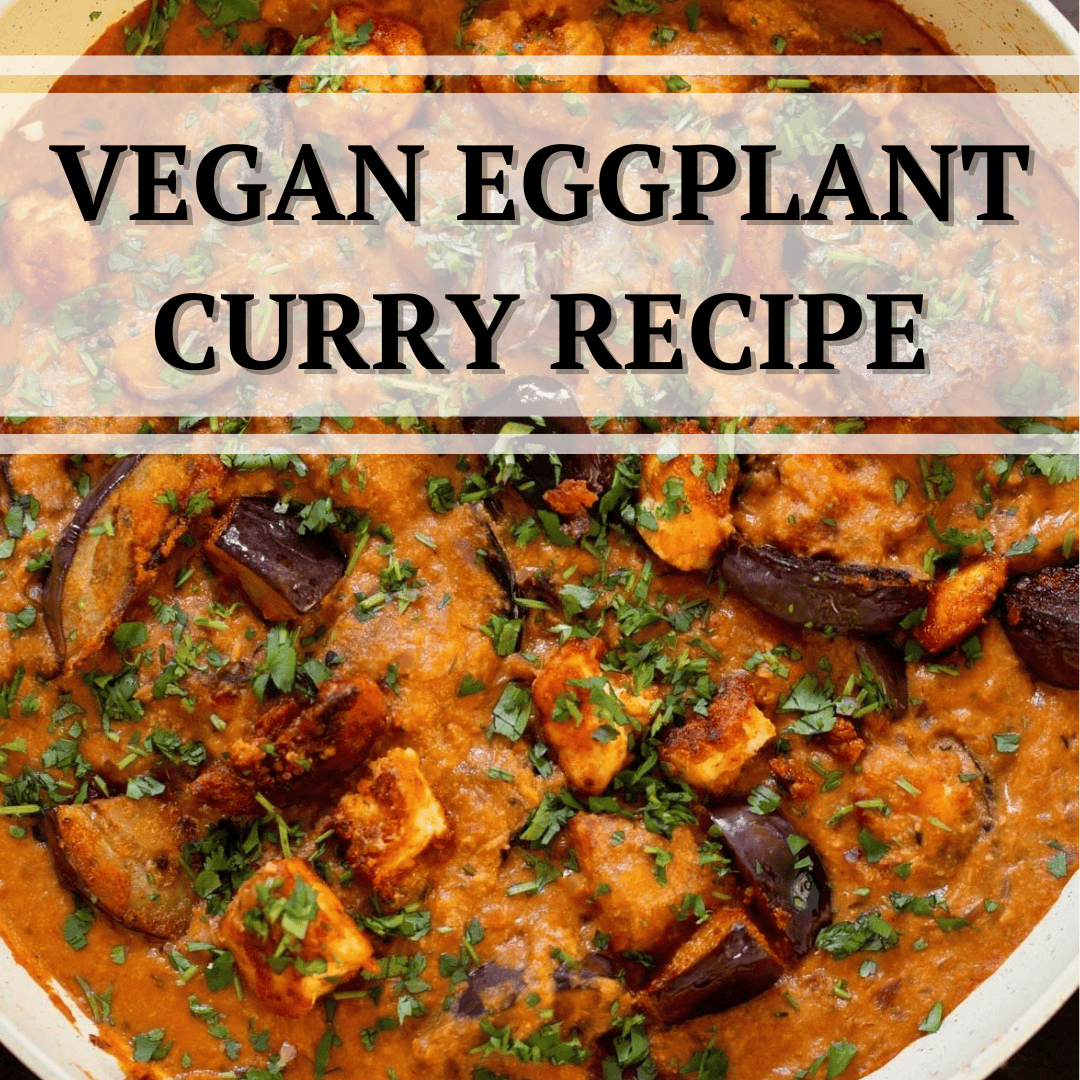This curry is all about deep, comforting flavors. The eggplant becomes silky and tender as it cooks, soaking up the aromatic sauce made with coconut milk, tomatoes, garlic, and spices.
You get a balance of warmth from curry powder, richness from the coconut, and a slight sweetness that ties it all together.
It’s a dish that feels hearty but still light—satisfying without being heavy. Each bite offers a little bit of spice, creaminess, and melt-in-your-mouth texture from the eggplant.
Paired with rice or flatbread, it’s a simple, nourishing vegan meal that never feels boring.
Choosing the Best Eggplant
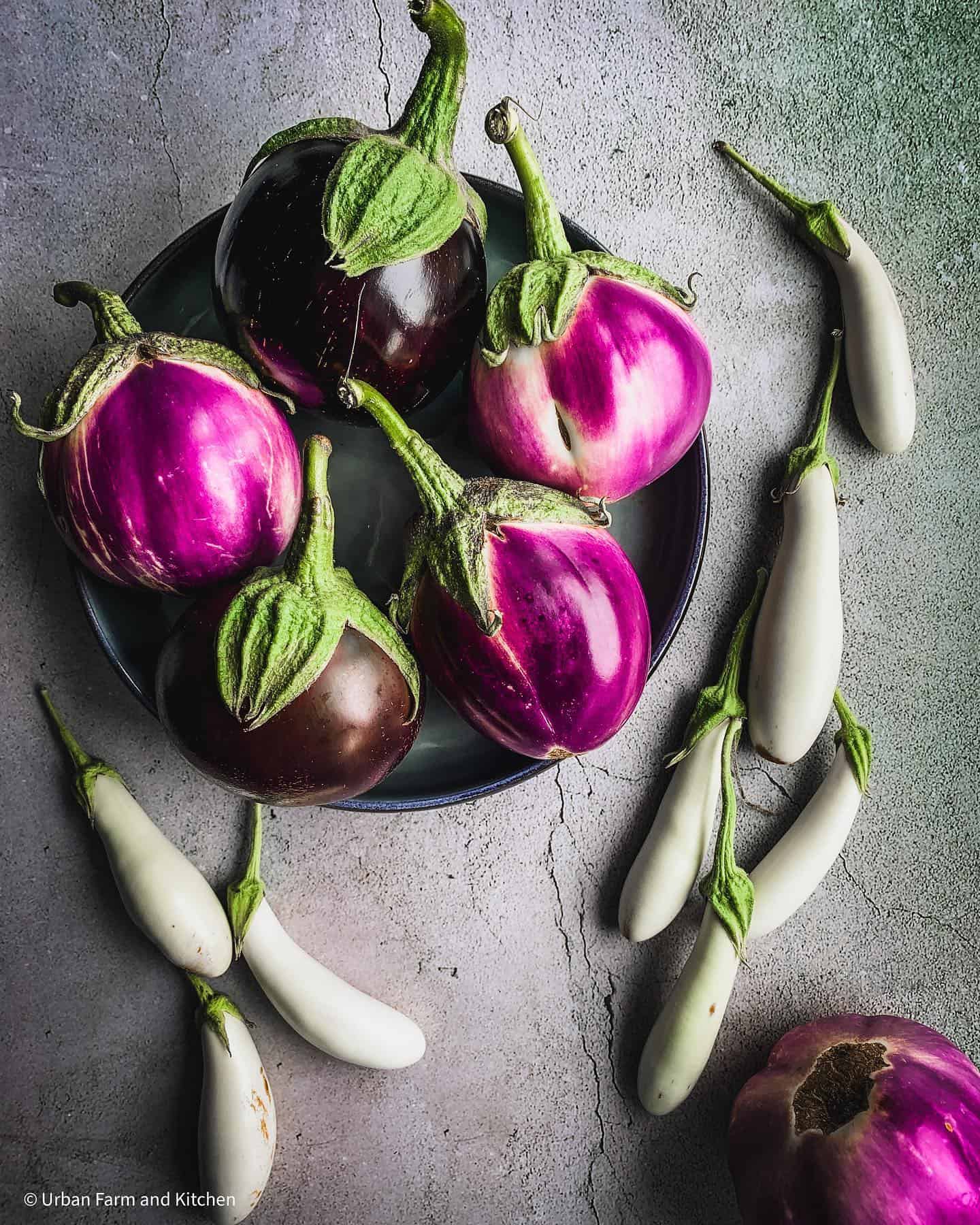
The type of eggplant you use makes a big difference in both texture and flavor.
Smaller varieties like Japanese or Italian eggplants are ideal for curry. They have thinner skins, fewer seeds, and a delicate flavor that absorbs spices beautifully.
Large globe eggplants work too, but they need to be salted and drained to remove any bitterness.
When choosing eggplant, look for ones that are firm, shiny, and heavy for their size. Avoid any with soft spots or dull skin—that’s a sign they’re past their peak.
Tips for Preparing and Cooking Eggplant
Salt and Drain the Eggplant
If you’re using a larger eggplant, sprinkle the cubes with salt and let them sit for 20–30 minutes before cooking.
This helps draw out bitterness and extra moisture, giving you a creamier texture once it’s cooked.
Don’t Rush the Cooking
Eggplant needs time to soften and caramelize. Sauté it until golden before adding liquids; this step deepens the flavor and prevents the pieces from turning mushy later.
Layer the Flavors
Start by blooming your spices in oil before adding other ingredients. Heating curry powder, cumin, and turmeric releases their aroma and adds depth to the final dish.
Keep It Creamy
Use full-fat coconut milk for the richest, most luxurious texture. Light coconut milk works too, but produces a thinner sauce.
Recipe Variations and Substitutes
One of the best things about this recipe is how flexible it is.
For a bit of heat, stir in chopped fresh chili or a pinch of cayenne. Add chickpeas, lentils, or tofu if you want more protein—they soak up the curry beautifully.
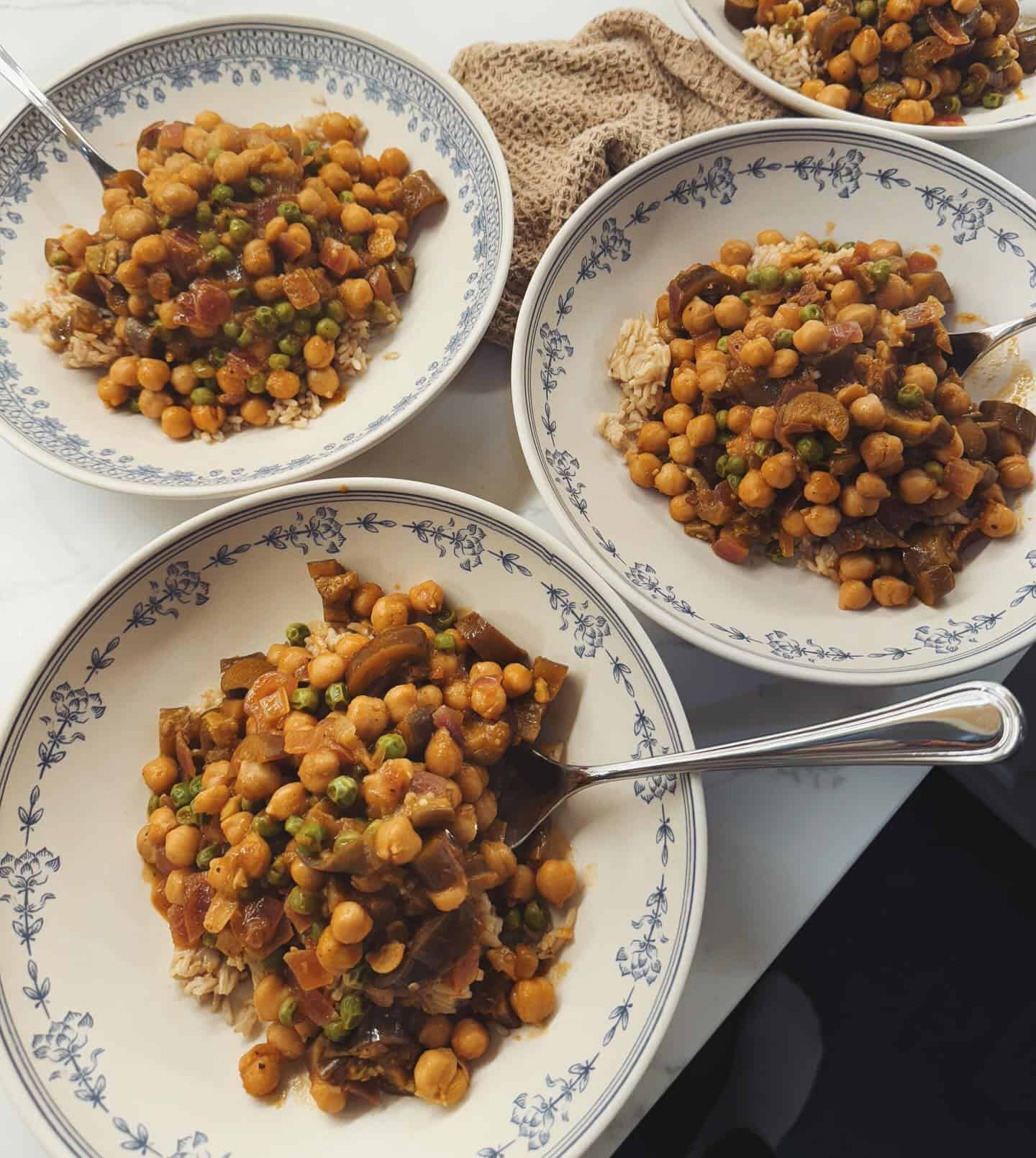
You can also mix in spinach or kale near the end of cooking for extra greens.
If you don’t have coconut milk, you can use cashew cream or plain non-dairy yogurt for a creamy texture. For a tomato-forward version, add extra diced tomatoes or a spoonful of tomato paste.
Serving Suggestions
Eggplant curry pairs perfectly with a side of steamed basmati rice, jasmine rice, or quinoa. The grains soak up the creamy sauce and balance the spice beautifully.
Warm naan or roti on the side turns it into a comforting, complete meal. You can also serve it over couscous or with roasted potatoes for something heartier.
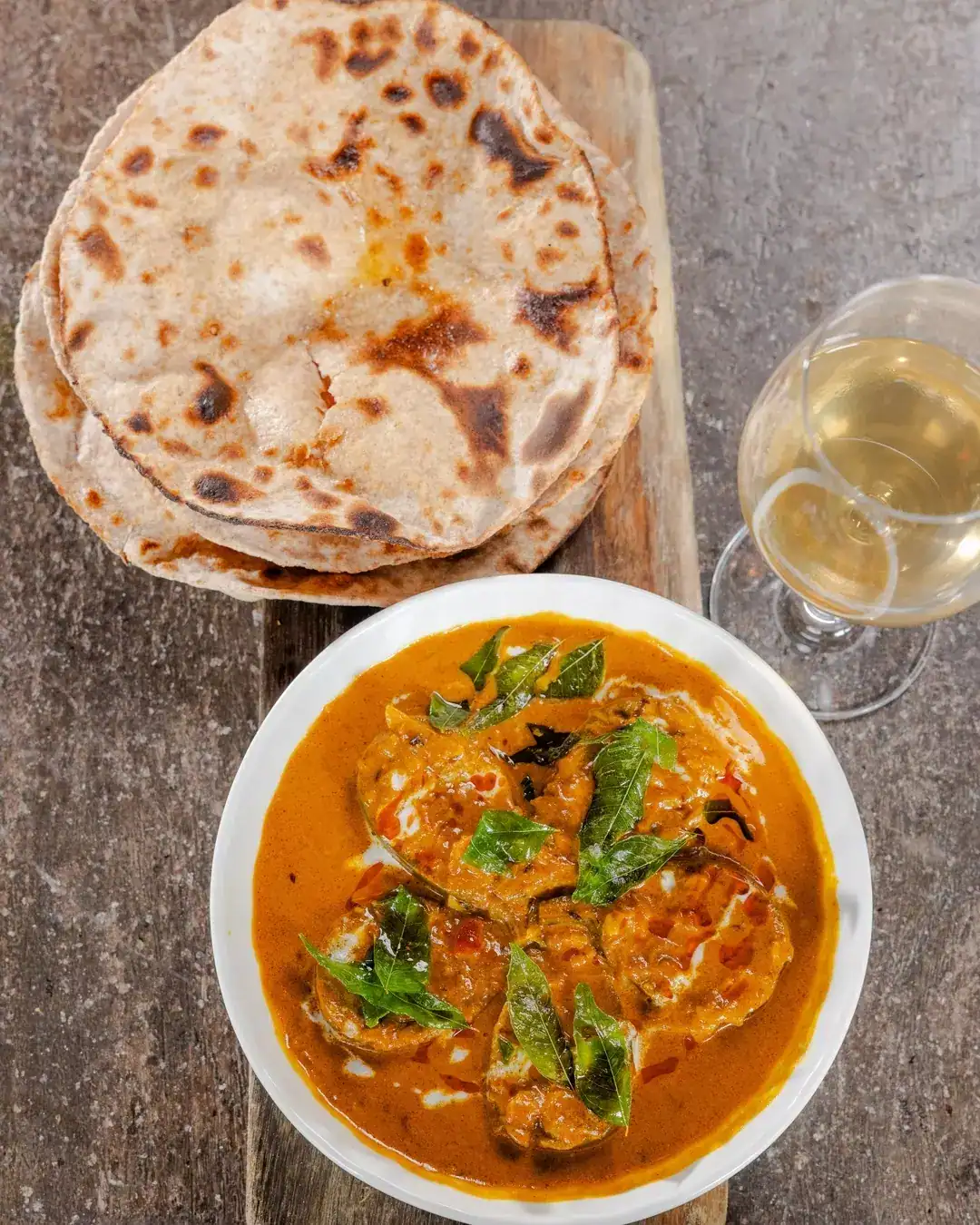
A squeeze of lime juice and a sprinkle of fresh cilantro just before serving add brightness and freshness that lifts every bite.
Make-Ahead and Storage Instructions
This curry tastes even better the next day as the flavors deepen. You can store leftovers in an airtight container in the refrigerator for up to four days.
Reheat gently on the stove or in the microwave, adding a splash of coconut milk or water if it thickens too much.
If you’d like to freeze it, let the curry cool completely first. Transfer to freezer-safe containers and freeze for up to three months.
Thaw overnight in the refrigerator and reheat until piping hot before serving.
Frequently Asked Questions
Can I make this curry ahead of time?
Yes! In fact, it tastes better when made in advance. The flavors meld beautifully overnight, so it’s perfect for meal prep.
Can I use light coconut milk instead of full-fat?
You can, but the sauce will be a bit thinner and less creamy. Full-fat coconut milk gives the best richness and balance to the spices.
Can I add other vegetables to the curry?
Definitely! Zucchini, bell peppers, cauliflower, and chickpeas all fit nicely. Just be sure to adjust cooking times so everything stays tender, not mushy.
Can I make this curry without coconut milk?
Yes, though you’ll lose some of the creaminess. You can substitute cashew cream or a mix of almond milk and a little cornstarch for the body.
Can I grill or roast the eggplant first?
That’s a great option. Roasting adds a smoky depth of flavor. Just roast the cubes until golden, then add them to the curry sauce in the final few minutes of cooking.
Creamy Vegan Eggplant Curry
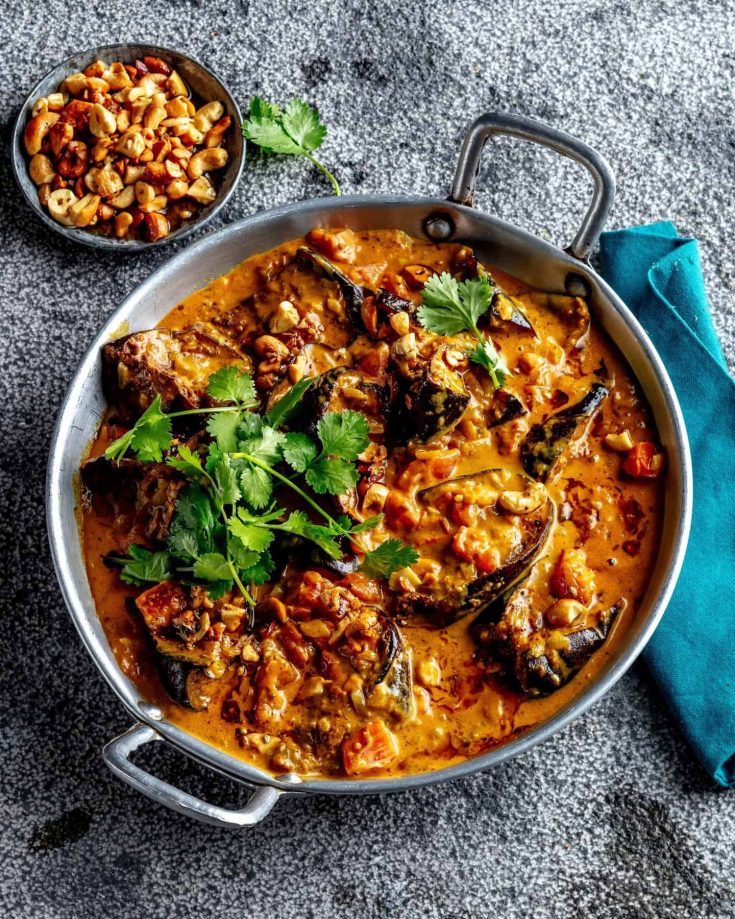
Image credit: @deliciousaus
Ingredients
For the Curry
- 2 medium Japanese or Italian eggplants, cut into cubes
- 2 tablespoons coconut oil or olive oil
- 1 small onion, finely chopped
- 3 cloves garlic, minced
- 1 tablespoon fresh ginger, grated
- 2 teaspoons curry powder
- 1 teaspoon ground cumin
- 1/2 teaspoon turmeric
- 1 teaspoon salt (adjust to taste)
- 1 can (14 oz / 400 ml) coconut milk (full-fat preferred)
- 1 can (14 oz / 400 g) diced tomatoes
- 1 tablespoon tomato paste
Optional Add-Ins
- 1 cup cooked chickpeas or lentils
- 1–2 cups baby spinach
- 1 fresh chili or 1/4 teaspoon cayenne (for heat)
- 1 tablespoon lime juice or lemon juice
- Fresh cilantro, for garnish
Instructions
- Prepare the eggplant. Cut the eggplant into cubes and sprinkle lightly with salt. Let it sit for 20 minutes, then pat dry with paper towels.
- Sauté the aromatics. In a large pan, heat oil over medium heat. Add onion and cook until translucent, about 5 minutes. Stir in garlic and ginger; cook until fragrant.
- Add the spices. Stir in curry powder, cumin, turmeric, and salt. Let them bloom in the oil for about 30 seconds.
- Cook the eggplant. Add the eggplant cubes and stir to coat them in the spices. Cook for 5–7 minutes until lightly browned.
- Simmer the sauce. Add diced tomatoes, tomato paste, and coconut milk. Stir well, reduce the heat, and simmer uncovered for 15–20 minutes until the eggplant is tender and the sauce thickens.
- Finish and serve. Stir in lime juice and any greens or add-ins. Simmer for 2 more minutes. Garnish with cilantro and serve hot over rice or with naan.
Featured image credit: @veganricha

